<Final> 36. Chronological Table _February 12, 1968, South Korea, and the World
Precursor to the Mỹ Lai Massacre: 1968 Phong Nhị, Phong Nhất_36: Chronological Table _February 12, 1968, South Korea, and the World
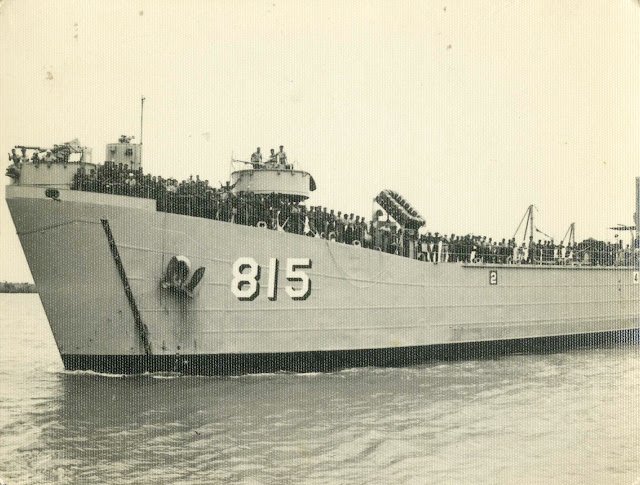
1960 A banyan tree is planted in Phong Nhị Điện Bàn District (present day, Điện Bàn City) Quang Nam Province. In December, the National Liberation Front or the Viet Cong is formed, and North Vietnamese government announces its support for it.
1961 May 16th, Military coup d'état by Army Major General Park Chung-hee.
1963 October 15, Park Chung-hee defeats opponent, Yoon Bo-sun and becomes president.
November 2, South Vietnamese President Ngo Dinh Diem is murdered.
1964 May 9, U.S. government appeals to 25 countries, including South Korea, for military and economic support for South Vietnam.
August 4, U.S. claims that A North Vietnamese torpedo attacked the U.S destroyer Maddox, and bombs a North Vietnamese naval torpedo base and crude oil storage.
August 7, U.S. Congress delegates all authority related to the Vietnam War to President Johnson.
September 11, The first batch of South Korean troops dispatched to South Vietnam (140 soldiers, including military doctors at the first mobile surgery hospital, arriving in Saigon on the 22nd)
1965 February 7, U.S. begins air raids on North Vietnam.
April 24, The founding of Beheiren, an anti-war peace group in Japan.
June 21, South Vietnamese Prime Minister Nguyễn Cao Kỳ requests dispatch of South Korean combat troops.
July 3, Sergeant Kim Dong-hee of the Busan Military Academy in South Korea goes AWOL ahead of his dispatch to Vietnam. A month later smuggles himself into Japan.
August 13, South Korea's ruling party (the Republican Party) passes a bill to send troops to Vietnam.
October 3, The second batch of South Korean troops dispatched to Vietnam. The 2nd Brigade of the Marine Corps (the Blue Dragon Unit), becomes the first combat unit to land in Cam Ranh Bay on the 9th.
October 13, South Korea's Capital Mechanized Infantry Division, also known as Fierce Tiger Division, dispatch to South Vietnam (lands in Qui Nhơn on the 25th)
December 16, ROK’s 2nd Brigade of the Marine Corps relocates to Tuy Hòa.
1966 From January 23 to February 26, three Korean Capital Mechanized Infantry Divisions entered Vinh an, Binh Dinh Province, from a total of 15 points. A total of 1004 people were killed. In particular, 380 people died in an hour in the village of Go Day on February 26.
March 7, U.S. Ambassador to Korea Winthrop Brown promises 14 compensation measures in exchange for South Korea's additional troop dispatch to Vietnam (in what was known as the Brown Memorandum).
August 18, ROK Army Marine Corps 2nd Brigade heads to Chu Lai.
August 27, ROK 9th Infantry Division (the White Horse Unit) dispatched (arrive in Nha Trang on Sept. 5)
Sept. 9, Ahn Hak-soo, a communications soldier at South Korea's No. 1 Mobile Surgical Hospital, who was dispatched to South Vietnam, goes missing in Saigon.
October 12, North Korea's ruling Workers' Party of Chosun adopts a statement of representatives of the Workers' Party of Chosun on the issue of Vietnam, pledging support for the struggle of the people of Vietnam.
December 3, ROK Marines 2nd Brigade soldiers enter Bình Hòa, Bình Sơn District, Quảng Ngãi Province. For four days until December 6th, they kill about 430 residents.
December 10, Japan’s Beheiren, spreads "Japan's Letter to U.S. Soldiers" in front of Yokosuka Base.
1967 March 27, Ahn Hak-soo, a communications sergeant at the South Korean Army's No. 1 Mobile Surgical Hospital, appears on North Korea's Pyongyang Anti-South Korea Broadcasting Station, six months after disappearing from Saigon.
April 4, Kim Jin-soo, a Korean-American soldier deserts his Japanese base upon reading Beheiren’s leaflets. Enters the Cuban Embassy and applies for asylum.
May 3, Park Chung-hee defeats political opponent, Yoon Bo-sun and is elected president of South Korea.
September 3, President Nguyễn Văn Thiệu and Vice President Nguyễn Cao Kỳ enter South Vietnam's constitutional assembly election.
October 9, Che Guevara, shot dead by a Bolivian sergeant in Chaco, Bolivia.
November 11, Japan’s Beheiren smuggles four soldiers who escaped from the U.S. aircraft carrier, Intrepid, to Sweden.
December 22, ROK Marine Corps 2nd Brigade begins relocating from Hoi An to Chu Lai.
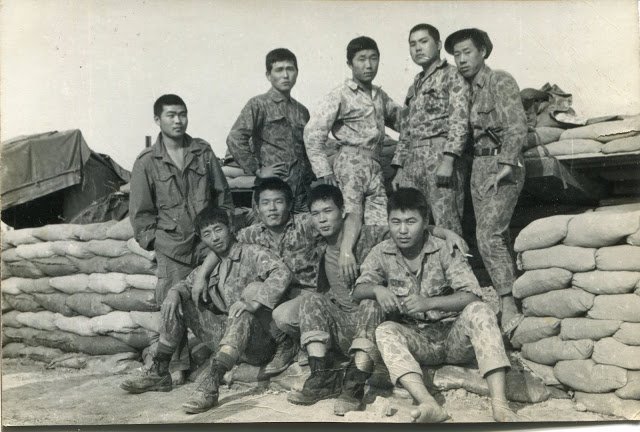
1968 January 20, Some platoon members of the 2nd Brigade of the ROK Marine Corps stormed the village of Thuy bo, Điện Bàn District, killing 145 villagers.
January 21, 31 North Korean special forces members, fail in their attempt to raid the presidential office of the Blue House. (28-29 North Korean special forces members are killed, and 30 ROK soldiers and civilians lose their lives. Kim Shin-jo arrested)
January 21, Japan's Beheiren holds a demonstration urging U.S. soldiers to desert the military in front of the U.S. nuclear aircraft carrier Enterprise, which arrived at Sasebo Port.
January 23, USS Pueblo is abducted by a North Korean navy vessel in the east coast of the Korean peninsula. U.S. nuclear aircraft carrier Enterprise, holds a show of force in front of the Wonsan Port.
January 26, Sergeant Kim Dong-hee, a South Korean deserter who was held in Japan's Omura camp, heads to North Korea.
January 30, North Vietnam and the Viet Cong wage the Tet Offensive (The General Offensive and Uprising of Tet Mau Than) throughout all of South Vietnam.
January 30, The 2nd Brigade of the ROK Marine Corps completes relocating to Hoi an and begin Operation Monster Dragon #1 in a counterattack to the Tet Offensive.
February 1, Major General Nguyễn Ngọc Loan, South Vietnam's chief of security, holds a summary execution of the Viet Cong in the streets of Saigon.
February 1, A groundbreaking ceremony for the Seoul-Suwon section of Korea's Gyeongbu Expressway.
February 7, ROK's Defense Ministry Announces Retention of All Soldiers.
February 11, U.S. President Johnson's Special Envoy Cyrus Vance arrives in Korea.
February 12, President Park Chung-hee in his interview with the Washington Post urges U.S. military action against North Korea.
February 12, The first company of the ROK Marine Corps 2nd Brigade enters the villages of Phong Nhị and Phong Nhất, leaving 74 civilians dead.
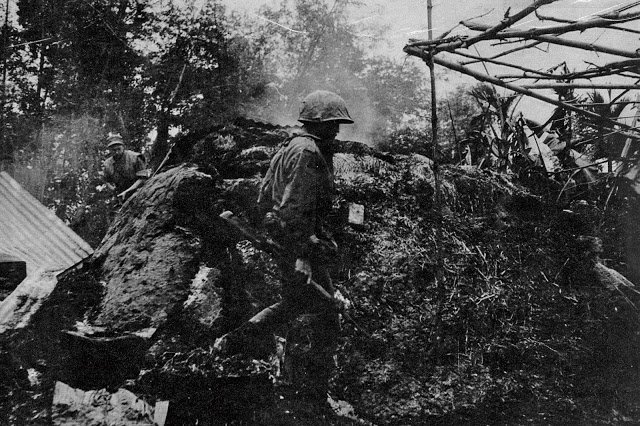
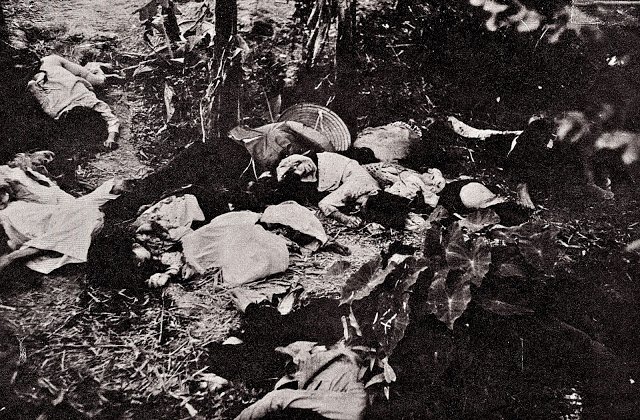
February 13, The residents of Phong Nhị and Phong Nhất lead a demonstration in response to the shootings by laying the corpses along the Number one national highway.
February 15, ROK and the U.S. issue a joint statement that they would consult each other to respond immediately to North Korea's provocations.
February 22, members of the ROK Marine Corps 2nd Brigade enter the Hà My village, Điện Bàn District, leaving 138 civilians dead.
February, JATEC (Japan Technical Committee for assistance to Anti -War Deserters), an unofficial secret organization in Beheiren, Japan, is formed.
March 16, Mỹ Lai massacre incited by U.S. soldiers in the Sơn Mỹ Village, Sơn Tịnh District, Quảng Ngãi Province, resulting in 504 civilian victims.
March 31, U.S. President Johnson, declares partial suspension of aerial attacks on North Vietnam and renounces presidential candidacy.
April 1, Establishment of the ROK Reserve Forces.
April 4, The assassination of Martin Luther King, Jr., the leader of the American Civil Rights movement.
April 22, Korean-American military deserter, Kim Jin-su, escapes to Sweden from Japan.
April 27, The unveiling ceremony of the statue of Admiral Yi Sun-sin, Sejong-ro, Seoul.
April 29, U.S. Army Commander in Vietnam, Westmoreland writes a letter requesting an explanation to ROK Army Commander in Vietnam, Chae Myung-shin regarding the Phong Nhị and Phong Nhất incident.
May 2, Paris Nanterre University, students begin protesting against school issues, and later against the Vietnam War (later spreads to student movements in other countries around the world, including in Europe).
May 5, Second Major offensive by the Viet Cong. Major General Nguyễn Ngọc Loan, South Vietnam's chief of security incurs serious injury.
May, ROK Marine Corps 2nd Brigade Military Police investigates officers and soldiers related to the Phong Nhị and Phong Nhất incident.
May 13, U.S. and North Vietnam have their first Paris Conference.
June 4, ROK Army Commander in Vietnam, Chae Myung-shin responds to U.S. Army Commander in Vietnam, Westmoreland regarding the Phong Nhị and Phong Nhất incident, claiming that it was actually the Viet Cong camouflaged as ROK soldiers.
June 6, the assassination of Robert Kennedy of the Democratic Party, a strong presidential candidate of the United States.
November 6, Richard Nixon (Republican) elected U.S. President.
November 21, Implementation of the Korean resident registration card system and the abolition of municipal and provincial citizenship.
December 5, The Declaration of the Charter of National Education, which opens with "We were born on this land with the mission of national revival."
December 9, Lee Seung-bok, a child from South Korea, dies. Killed by North Korean special forces infiltrating Uljin and Samcheok.
1969 February, the families of the victims of Phong Nhị and Phong Nhất submit a petition to the chairman of South Vietnam’s House of Representatives, a year after the incident.
May 27, South Vietnamese President Nguyễn Văn Thiệu visits South Korea and holds a summit meeting with President Park Chung-hee.
September 2, the death of Ho Chi Minh.
November 12, U.S. freelance reporter, Seymour M. Hersh becomes the first to cover the Mỹ Lai Massacre through the Washington Dispatch News Service.
November 17, The New York Times also covers the Mỹ Lai Massacre.
November 26, North Vietnamese representative at the Paris Peace Conference claims that 700 civilians were slaughtered by the ROK soldiers, mentioning Điện An, where Phong Nhị and Phong Nhất are located, as one of the areas affected.
November, South Korean President Park Chung-hee orders a special investigation into the Phong Nhị and Phong Nhất case. The Central Intelligence Agency summons officers and soldiers of the 2nd Brigade of the Marine Corps for questioning.
December 18, Col. Sam H. Sharp, the inspector general of the U.S. Army Command submits a confidential report to Major General Elias C. Townsend, Chief of Staff the alleged atrocities committed by the Korean military's Marine Corps, which includes the Phong Nhị and Phong Nhất case.
1970 January 11, The U.S. State Department sends a telegram to the U.S. Embassy in Seoul, instructing them to make sure that reports of atrocities involving Korean troops are never known to the media.
February 24, U.S. Symington hearing commences investigation Korea.
December, Takahashi Taketomo from Japan’s JATEC helps two U.S. military deserters, including John Phillip Lowe, escape with forged passports.
1971 April 27, Park Chung-hee becomes reelected president of South Korea, defeating opponent Kim Dae-jung.
1972 February 29, ROK Marine Corps 2nd Brigade completely returns to Korea.
October 27, The announcement of revision to the life-long presidential provision of the Yushin Constitution. President Park Chung-hee elected to the National Assembly of Unification (eighth election).
1973, January 28, Vietnam Armistice Agreement comes into effect.
1975 April 30, unconditional surrender of the South Vietnamese government after North Vietnamese Army Tanks enter the Independence Palace Square in Saigon where the South Vietnamese presidential residence is located, marking the end of the Vietnam War.
1976 January 21, North and South Vietnam reunified under Socialist Republic of Vietnam.
1978 July 6, South Korean President Park Chung-hee win presidential election at the National Assembly of Unification on July 6.
1979 October 26, ROK President Park Chung-hee assassinated by Kim Jae-kyu, director of the Central Intelligence Agency.
December 12, Chun Doo-hwan, the commander of the security forces in South Korea, seizes military power by arresting Army Chief of Staff Chung Seung-hwa, the martial law commander.
1980 May 18, nationwide expansion of martial law in Korea. Korea Airborne troops in Gwangju start beating and killing mercilessly.
November 1, Chun Doo-hwan wins the 11th presidential election of South Korea.
1992, December 18, Kim Young-sam, a Democratic Liberal Party candidate, wins the 14th South Korean presidential election, leading to the first civilian government in Korea.
1992, December 22, Korea-Vietnam diplomatic relations established.
1995, December, The Culture and Communications office in Điện Bàn District, Quang Nam Province investigates Phong Nhị and Phong Nhất and publishes a collection of data.
1997 December 18, Kim Dae-jung wins the 15th presidential election of South Korea.
1999 September 2, South Korean Current Affairs Magazine 《Hankyoreh 21》(273th Edition), An article by Koo Soo-jung, Ho Chi Minh correspondent, “Remember the unavenged souls of Vietnam,” covers the victims of ROK soldiers within five of the central provinces in Vietnam (becoming the first official coverage of civilian massacres from the Vietnam War).
September 19, For the first time in Vietnamese mass media, the killing of civilians by ROK soldiers reported (Bình Hòa Massacre, Quảng Ngãi Province)
October 28, South Korean Current Affairs Magazine 《Hankyoreh 21》 (280th edition), starts a campaign to raise money to help victims of the massacre in Vietnam. Koo Soo-jung, Ho Chi Minh correspondent reports for the first time, the testimonies of victims from Phong Nhị and Phong Nhất.
2000 January 11, For the first time, Reuters, Newsweek etc. reports on the massacre of civilians by the ROK soldiers in the Vietnam War.
January 28, The launch of a task force in South Korea to investigate the massacre of civilians in Vietnam, later renamed “the Vietnam War Truth Commission”
January 29, The launching ceremony of "Vietnam Medical Project for Reconciliation and Peace" with members of the Dentistry Society for Health Society in Korea.
April 7, American Friends Service Committee along with 24 human rights groups around the world, urge President Kim Dae-jung to issue a public apology and compensate for the civilian massacre in Vietnam through a newspaper advertisement in a Korean daily newspaper〈The Hankyoreh〉
May 4, South Korean Current Affairs Magazine 《Hankyoreh 21》(306th edition) covers “Investigation of the Central Intelligence Agency: officers involved in the Phong Nhị and Phong Nhất incident”
June 27, More than 2,000 Korean veterans of the Association of Korean Veterans Disabled from Defoliant, attacked the Hankyoreh newspaper for defamation, destroying property and causing violent acts. Four members of the group arrested (released thereafter on probation). The official loss of the Hankyoreh newspaper was 70 million won.
November 23,《Hankyoreh 21》(334th edition), covers the declassified U.S. documents on Phong Nhị and Phong Nhất.
2001 May 3, 《Hankyoreh 21》(356th edition) covers the people whose corpses are pictured in photographs of Phong Nhị and Phong Nhất.
August 28, Korean President Kim Dae-jung apologizes to Vietnamese President, Trần Đức Lương, promising to help build hospitals and schools in areas that were affected by civilian massacres.
August 24, South Korea's Grand National Party Representative, Park Geun-hye, criticized Kim Dae-jung on her website, writing that his act of apologizing to Vietnam is akin to the 16 states of head whose countries participated in the Korean War apologizing to Kim Jung-il.
2003 January 21, The completion of the "Korea-Vietnam Peace Park" in Phú Yên Province, Tuy Hòa (funds raised independently by《Hankyoreh 21》)
2004 August, Vietnam’s Phong Nhị and Phong Nhất Victims' Memorial Monument (Civic group "Me and We" members raise funds and also participate in the construction of the building themselves along with the villagers)
2012 December 19, Saenuri Party candidate Park Geun-hye elected South Korean president (18th election).
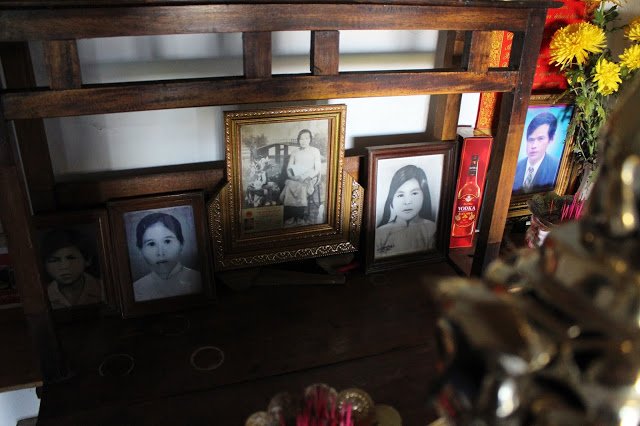
2015 March 30, Two survivors of the Vietnam War massacres make their first visit to South Korea. Nguyễn Thị Thanh from Phong Nhị and Nguyễn Tấn Lân from An Vinh village (Điện Bàn). Members of war organizations, such as the Korean Association for the Vietnam War Veterans, and the Association of Korean Veterans Disabled from Defoliant, came out to every site the two Vietnamese visit to protest in their military uniforms.
2016 September 9, Record Exhibition of The Story of Phong Nhị and Phong Nhất by Koh Kyung-tae, held at Gallery Art Link in Seoul. Exhibitions in Busan, Jeju, Gwangju, and Cheongju followed suit.
September 19, The inaugural assembly of the Korea-Vietnam Peace Foundation. Bishop Kang Woo-il, appointed as the first chairman of the committee, and Koo Soo-jung, the Standing Director.
October, all over South Korea candlelight vigils take place demanding Choi Soon-sil’s denouncement of state affairs and Park Geun-hye’s resignation from presidency.
2017 March 10, The Korean Constitutional Court unanimously cites the impeachment of Park Geun-hye, which was the first time in Korea’s constitutional history.
April 26, the unveiling ceremony of the Pietà statue, which depicts a mother's pain during the massacre of civilians during the Vietnam War, at Saint Francisco Peace Center in Gangjeong Village, Jeju Island.
May 9, Democratic Party of Korea candidate, Moon Jae-in is elected president in the 19th election.
August 2, the Vietnam War TF, a lawyers association for democratic society, requests that the NIS (formerly the Central Intelligence Agency) disclose the list of documents from 1969 which covers the investigation Choi Young-on, Lee Sang-woo and Kim Ki-dong, veterans of the Phong Nhị and Phong Nhất case. Fourteen days later, the agency responds with its decision for nondisclosure so an administrative litigation is currently underway.
2018 March 23, Moon Jae-in Korean president, in his summit meeting with Trần Đại Quang, President of Vietnam, announces,"deep regret regarding the unfortunate history between the two countries that remains in our memories.” It is reported that he considered issuing an apology, specifically for the massacre of civilians by South Korean army, but the decision was tabled.

April 21, “People’s Tribunal on War Crimes by South Korean Troops during the Vietnam War” hosted by Lawyers for a Democratic Society and the Korea-Vietnam Peace Foundation among others. Phong Nhị Village Survivor Nguyễn Thị Thanh and Hà My Village Survivor Nguyễn Thị Thanh were plaintiffs and the Republic of Korea was the defendant responsible for the civilian massacre of its military. Former Supreme Court Justice Kim Young-ran, who was in charge of the trial, officially admits the responsibility of the Republic of Korea and recommends that the truth be discovered about illegal activities in the Vietnam War.
2019 April 1, Phong Nhị Village Survivor Nguyễn Thị Thanh and Hà My Village Survivor Nguyễn Thị Thanh visit Korea and are granted the 4.3 Jeju Peace Prize Special Award.
April 4, Phong Nhị Village Survivor Nguyễn Thị Thanh and Hà My Village Survivor Nguyễn Thị Thanh express their position on investigating the truth, issuing an official apology, and restoring the dignity and honor of the victims, through a petition signed by 103 victims of massacre from 17 villages in Vietnam, and directly submit it to the Blue House in Jongro-gu, Seoul.
- Written by humank (Journalist; Seoul, Korea)
- Translated and revised as necessary by April Kim (Tokyo, Japan)